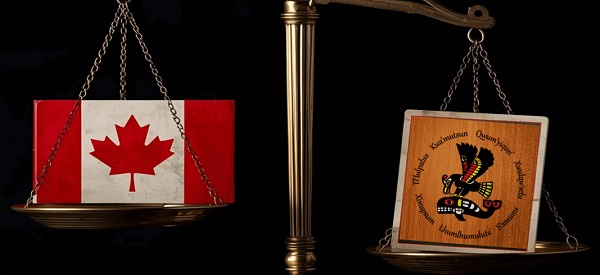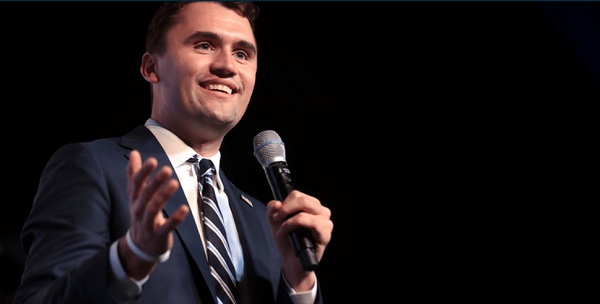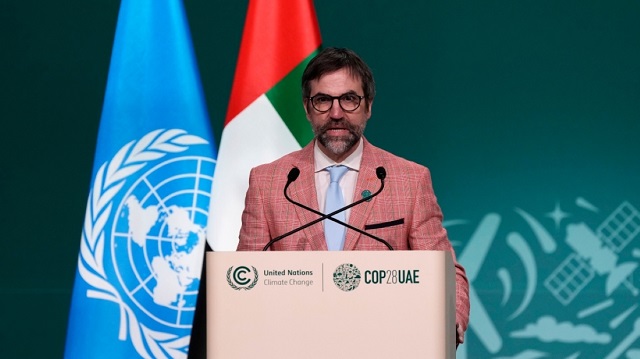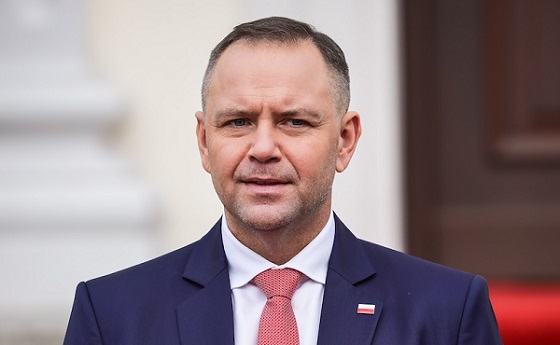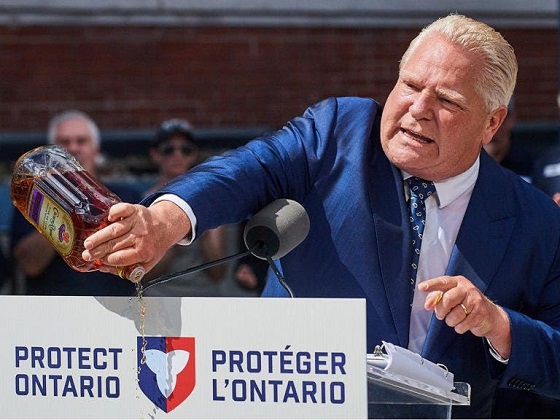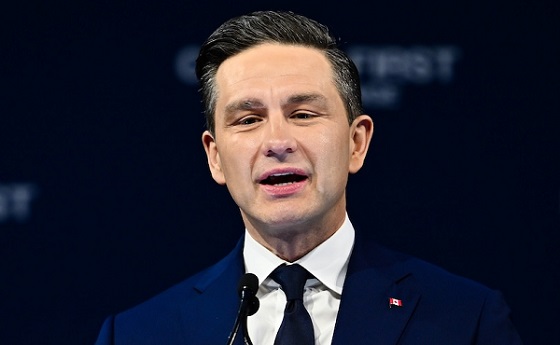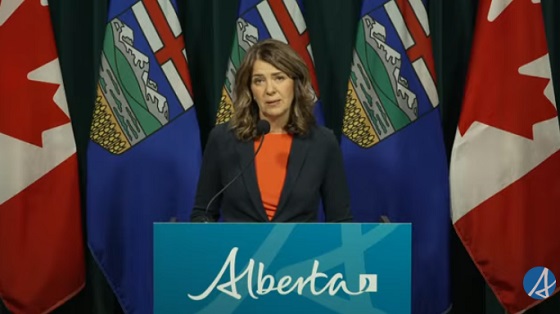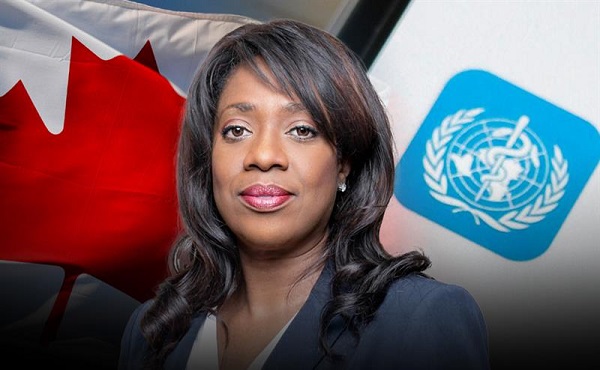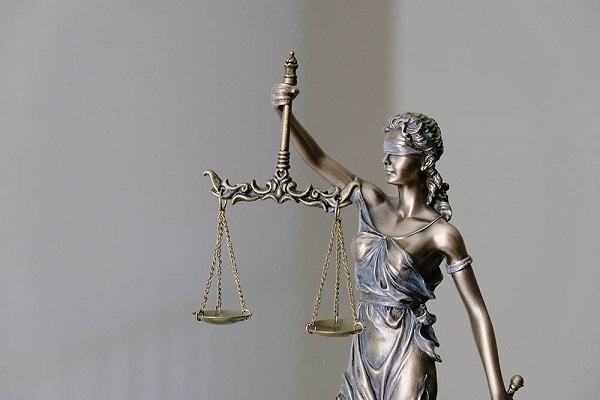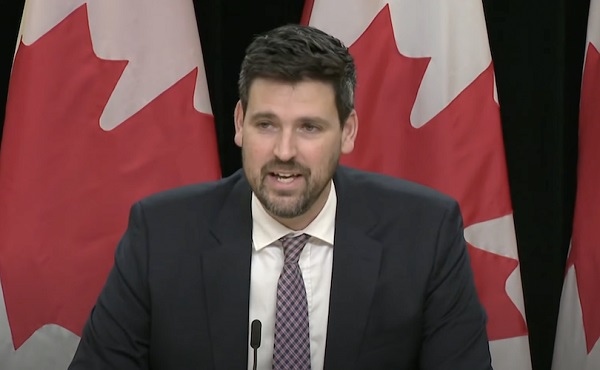At a recent in-service for Manitoba teachers on the subject of Indigenous education, attendees were told by guest speaker Christopher Emdin that “resistance to colonialism is not terrorism” – the words splashed across a giant display screen. The American author and educational theorist was alluding to the October 7, 2023 Hamas terror attack against Israel, but he was also making a general statement about lands “occupied by settler colonialists” – i.e., ordinary non-Indigenous Canadians. Emdin had been hired because “settler colonialism” has become a source of pedagogical angst in the Winnipeg School Division. In trying to do its bit to effect Indigenous Reconciliation, the division – like others across Canada – has come to regard settler colonialism as the historic yet current oppressor. Emdin’s message conveyed an essential subtext: Indigenous people have a right to resist colonial occupation by any means necessary in order to get their land back.
Land Back is a political sentiment originating among Indigenous thinkers and activists in the United States that is now flourishing in Canada. Land Back is fundamentally revanchist: it seeks a return of lands considered to have been possessed by North American Indigenous peoples before contact with Europeans. As such, virtually all of North America can be regarded as former native territory if “possession” is defined loosely enough. It is difficult to characterize Land Back as a political movement because it lacks the associated cohesion and formal organization. Its core impulses are a combination of mysticism, grievance, aspiration and ideology. But its goals are unquestionably political – often fiercely so.
 “Resistance to colonialism is not terrorism,” Christopher Emdin recently told a gathering of Winnipeg teachers; the American educational theorist was speaking in reference to Hamas’ terror attack on Israel on October 7, 2023 (right) but also as a general condemnation of “settler colonialism”. (Sources of photos: (left) The Brainwaves Video Anthology/YouTube; (right) AP Photo/Ohad Zwigenberg)
“Resistance to colonialism is not terrorism,” Christopher Emdin recently told a gathering of Winnipeg teachers; the American educational theorist was speaking in reference to Hamas’ terror attack on Israel on October 7, 2023 (right) but also as a general condemnation of “settler colonialism”. (Sources of photos: (left) The Brainwaves Video Anthology/YouTube; (right) AP Photo/Ohad Zwigenberg)
Definitions of Land Back (also sometimes spelled Landback, LandBack or #LandBack) vary among professional and grassroots activists, opinion-leaders and other adherents. Jesse Wente, the journalist and current Chair of the Canada Council for the Arts, says Land Back is “about the decision-making power. It’s about self-determination for our Peoples here that should include some access to the territories and resources in a more equitable fashion, and for us to have control over how that actually looks.”
Ronald Gamblin, an Anishinaabe from Manitoba who is National Learning Community Coordinator of the 4Rs Youth Movement, states that the term “encompasses a complicated and intergenerational web of ideas/movements. When I hear Indigenous youth and land protectors chant ‘Land Back!’ at a rally, I know it can mean the literal restoration of land ownership. When grandmothers and knowledge keepers say it, I tend to think it means more the stewardship and protection of mother earth. When Indigenous political leaders say it, it often means comprehensive land claims and self-governing agreements.”
 No single definition: Canadian arts journalist Jesse Wente (bottom left) describes Land Back as being “about the decision-making power”, while for Ronald Gamblin (bottom right) from 4Rs Youth Movement, the meaning depends on the person using it. Still others say it includes having the Sioux tribe gain control over the iconic U.S. Presidential Memorial at Mount Rushmore, South Dakota (top). (Sources of photos: (top) Dean Franklin, licensed under CC BY 2.0; (bottom left) Royal Ontario Museum/YouTube; (bottom right) 4Rs Youth Movement)
No single definition: Canadian arts journalist Jesse Wente (bottom left) describes Land Back as being “about the decision-making power”, while for Ronald Gamblin (bottom right) from 4Rs Youth Movement, the meaning depends on the person using it. Still others say it includes having the Sioux tribe gain control over the iconic U.S. Presidential Memorial at Mount Rushmore, South Dakota (top). (Sources of photos: (top) Dean Franklin, licensed under CC BY 2.0; (bottom left) Royal Ontario Museum/YouTube; (bottom right) 4Rs Youth Movement)
From its general beginnings around 2010 or even earlier, Land Back’s first explicit expression came in 2018, according to Wikipedia, when Arnell Tailfeathers, a member of the Blood Tribe in Alberta, used it in the protests demanding the reversion to Sioux tribal control of the world-famous U.S. Presidential Memorial at Mount Rushmore in the Black Hills of South Dakota. Versions of Land Back now are also found in Australia, New Zealand, Fiji and Mexico.
Though it is hard to pin down precisely – as the varying descriptions above make clear – generally speaking Land Back is a militant iteration of aboriginal nationalism. Proponents often disavow the legitimacy of Canada and the United States and frequently express hostility to their citizenry, whom they label “settler colonialists”. As in virtually all expressions of ethnic and racial nationalism, an autonomous sovereign territory is sought by some Land Back proponents.
This article on the website of High Country News in Paonia, Colorado (not to be confused with the High River, Alberta newspaper of the same name) attempts to instruct “white” readers in the Land Back movement’s virtues – and is therefore instructive in another way. It defines “land ownership” as merely a tactic “that keeps wealth and power in white families” (Hispanic and blacks apparently being uninterested in owning land), equates police with “violence”, lays essentially all of North America’s current ills at the feet of Europeans, suggests “Western colonizers” are “evil”, and talks about “so-called” civilization.
While the sentiments of Land Back are most commonly expressed at the populist levels of social media and public events, the initial success and popularity of early Land Back activists prompted composition of a formal manifesto in 2019: Land Back: A Yellowhead Institute Red Paper. It is written in the spirit of the 1970 Citizens Plus “Red Paper” by Harold Cardinal of the Indian Association of Alberta, which had been issued to angrily counter the Pierre Trudeau government’s preceding White Paper (formally, the Statement of the Government of Canada on Indian Policy, 1969).
Although the 1969 White Paper recognized the clear problems arising from ‘the policy of treating Indian people as a race apart,’ it nonetheless did not call for the complete disassembly of the reserve system or the erasure of Indians’ separate status, but recommended something closer to what Quebec nationalists would later famously term ‘sovereignty-association’.
The new Red Paper makes it clear that Land Back aims to rationalize aboriginal sovereignty and, as it states on page 48, assert “fulsome Indigenous jurisdiction”. The 65-page document proposes a radical departure from liberal-democratic norms. It seeks to override the non-Indigenous nation-state and privilege a minority on the basis of ethnic/racial origin. The authors appear well-aware of what they are doing. They seek to justify a cultural exception to our ostensibly universalist liberal-democratic creed by using the assimilationist caricature of the 1969 White Paper as their theoretical foil.
Despite being widely if not universally portrayed as such – including by the authors of both Red Papers – the 1969 White Paper was not in my opinion concerned about cultural assimilation, but actually sought a third alternative to Canada’s historically fluctuating and often contradictory Indian policies of segregation and assimilation. Unfortunately, the White Paper only vaguely outlined this third alternative, as in the following passage from page 13: “For many years Canadians believed the Indian people had but two choices: they could live [in effective segregation] in a reserve community, or they could be assimilated and lose their Indian identity. Today Canada has more to offer. There is a third choice – a full role in Canadian society and in the economy while retaining, strengthening and developing an Indian identity which preserves the good things of the past and helps Indian people to prosper and thrive.”
 A 2019 official manifesto of Land Back activists (top left) advocates for “fulsome Indigenous jurisdiction” and a radical departure from Western liberal-democratic norms; their argument is based on a common critique of the Pierre Trudeau government’s 1969 Statement of the Government of Canada on Indian Policy, aka the White Paper (top right).
A 2019 official manifesto of Land Back activists (top left) advocates for “fulsome Indigenous jurisdiction” and a radical departure from Western liberal-democratic norms; their argument is based on a common critique of the Pierre Trudeau government’s 1969 Statement of the Government of Canada on Indian Policy, aka the White Paper (top right).
Although the White Paper recognized the clear problems arising from “the policy of treating Indian people as a race apart,” it nonetheless did not call for the complete disassembly of the reserve system or the erasure of Indians’ separate status, but recommended something closer to what Quebec nationalists would later famously term “sovereignty-association”. As the paper states: “Frustration is as great a handicap as a sense of grievance. True co-operation and participation can only come when the Indian people are controlling the land which makes up the reserves.”
The failure of the White Paper as a new policy direction resulted in a continuation of the frustration and grievance of the failed reserve system and, half a century later, Land Back activists like the Red Paper authors are trying to redeem the added years of misery. “Our times, too, are revolutionary,” the document states on page 6. “While tragically little has changed since 1968-1970, there are also emerging debates to reflect on and work through together. We continue to grapple with federal and provincial bureaucrats and/or industry on rights, title, and jurisdiction, but we are increasingly turning inward and are having productive conversations about what reclaiming land and water might look like, for all of us.”
 “Citizens plus”: The 1970 “Red Paper” challenged the principles of universalism and racial equality, demanding special rights and thereby giving rise to the notion of “Indigenous exceptionalism”. Shown, Harold Cardinal (standing), 25-year-old leader of the Indian Association of Alberta, addresses Prime Minister Pierre Trudeau and his cabinet during a Parliament Hill meeting, June 4, 1970. (Source of photo: CP PHOTO)
“Citizens plus”: The 1970 “Red Paper” challenged the principles of universalism and racial equality, demanding special rights and thereby giving rise to the notion of “Indigenous exceptionalism”. Shown, Harold Cardinal (standing), 25-year-old leader of the Indian Association of Alberta, addresses Prime Minister Pierre Trudeau and his cabinet during a Parliament Hill meeting, June 4, 1970. (Source of photo: CP PHOTO)
This is a disingenuous remark on the post-White Paper stasis, because that state of affairs was itself largely promulgated by the aboriginal nationalists of the day (and their white academic supporters), who fiercely denounced and resisted any civil reforms that might have resulted in Indians becoming like other citizens of Canada. This stance would have profound consequences.
The 1970s and 80s gave rise to the idea of Canada’s Indians becoming “citizens plus” – as the original Red Paper’s formal title suggested – meaning they would have the same rights as other citizens but also held additional rights by virtue of being aboriginal people. This is also when a notion of “Indigenous exceptionalism” arose and began to challenge the principle of universalism – the liberal-democratic ideal that every citizen should be equal and none should be discriminated against on the basis of race or ethnicity, and which had otherwise come to inform social and government policy in Canada. The great Mackenzie Valley Pipeline debate crystallized and amplified these elements, as well as birthing the Canadian version of the “decolonization” movement, as chronicled in this C2C article.
Forty-six years after Pierre Trudeau’s White Paper, his son was articulating just how far the idea of Indigenous exceptionalism had progressed in Canadian political discourse. During the 2015 federal election campaign, Justin Trudeau said that his government would “renew the nation-to-nation relationship with aboriginal people.” Then-Prime Minister Stephen Harper neglected to press Trudeau on just what he meant by that promise, unfortunately so, because it is a highly dubious statement. What nation-to-nation relationship, never mind what happened to it that necessitated renewal?
The relatively recent concept of universalism fundamentally rejects distinctions in law and governance on the basis of ancestry. The large exception being made for aboriginal people is based mainly on historical grievance: as the Indigenous people of Canada, they suffered from the colonization of their homelands by foreign nations and therefore deserve special considerations of redress.
Land Back can thus be seen as an accelerant to that fuzzy notion of renewing intra-national relationships (given there are at least 630 First Nations, there are potentially hundreds of nation-to-nation relationships in need of renewal), something that would guarantee years if not decades of grinding political negotiations, with all the frustration, disappointment and anger that would surely entail, leading to still more strife. The new Red Paper’s authors suggest what this might mean when they hint at the inherent militancy of Land Back on page 56: “[Another], and perhaps more direct, type of assertion revolves around physical reclamation or occupation of lands and waters.” If negotiations fail, in other words, we have other tactics at the ready.
Gamblin is explicit about this: “When you look at it, as Indigenous peoples and nations, we come from the land. The land is our home, our mother, our caregiver, it’s what makes us Indigenous,” he writes on the 4Rs Youth Movement website. “Considering this, non-Indigenous folks need to understand that land back is about much more than land. You need to understand that when you hear youth scream ‘LAND BACK’, when you see land protectors stand off against the RCMP, when elders make prayers for the land, and when political figures sit in land negotiations, Land back is about Indigenous peoples confronting colonialism at the root. It’s about fighting for the right to our relationship with the earth. It’s about coming back to ourselves, as sovereign Indigenous Nations.”
 The implications of “Indigenous exceptionalism”: Shown at top, graphic art recently posted to social media (at left) and spraypainted on a walkway (location unknown, at right) carrying violence-inciting messages; at bottom left, protesters unload a truck full of tires as they fortify a rail blockade in Tyendinaga Mohawk Territory, Belleville, Ontario, February 2020; bottom right, Ontario Provincial Police arrest a protester at the same blockade. (Sources of photos: (top right) dav, licensed under CC BY-NC-SA 2.0; (bottom left) The Canadian Press/Lars Hagberg; (bottom right) The Canadian Press/Adrian Wyld)
The implications of “Indigenous exceptionalism”: Shown at top, graphic art recently posted to social media (at left) and spraypainted on a walkway (location unknown, at right) carrying violence-inciting messages; at bottom left, protesters unload a truck full of tires as they fortify a rail blockade in Tyendinaga Mohawk Territory, Belleville, Ontario, February 2020; bottom right, Ontario Provincial Police arrest a protester at the same blockade. (Sources of photos: (top right) dav, licensed under CC BY-NC-SA 2.0; (bottom left) The Canadian Press/Lars Hagberg; (bottom right) The Canadian Press/Adrian Wyld)
The existential association of being with land has been common if not ubiquitous among Indigenous peoples worldwide throughout history. It has been widely romanticized and is typically regarded as essentially harmless, or at least understandable. But when viewed unsentimentally, it is clear that it is ethno-centric and exclusionary if not explicitly racist. In perhaps its worst expression, the Nazis harnessed this atavistic impulse in their racist doctrine of Blut und Boden (which means “blood and soil”): since they are from the land, they are of the land and, as such, have more right to the land than someone who came to this land from elsewhere.
The relatively recent concept of universalism fundamentally rejects distinctions in law and governance on the basis of ancestry. The large (and ever-growing) exception being made for aboriginal people is based mainly on historical grievance: as the Indigenous people of Canada, they suffered from the colonization of their homelands by foreign nations and therefore deserve special considerations of redress.
Turning again to Gamblin, who provides a routine example of this mindset. “The architects of Canadian colonial policy,” he writes, “knew that if they wanted access to the lands in order to generate wealth and power, that they would need to separate us from this relationship. So, they used tactics such as forced relocation away from our homes and onto reserves (Canada’s apartheid system), introduction of patriarchal governance (Indian Act Chiefs), starvation of traditional resources (such as buffalo massacres), breaking family units and knowledge transfer through Indian Residential Schools, targeting women and children with violent policies, limiting our access to on the land cultural practices, and even making it illegal for us to fight in the Canadian legal framework for stolen land. These were systematic tactics intended on destroying our relationship with our mother.”
 Among the Canadian “colonial” government’s “systematic tactics intended on destroying our relationship with our mother”, Gamblin names “targeting women and children with violent policies” and “buffalo massacres”, yet verifiable historical facts contradict his accusations. Shown at top, Indigenous children receiving medical examination; at bottom, a pile of bison skulls in the United States, 1892. (Source of bottom photo: Burton Historical Collection/Detroit Public Library)
Among the Canadian “colonial” government’s “systematic tactics intended on destroying our relationship with our mother”, Gamblin names “targeting women and children with violent policies” and “buffalo massacres”, yet verifiable historical facts contradict his accusations. Shown at top, Indigenous children receiving medical examination; at bottom, a pile of bison skulls in the United States, 1892. (Source of bottom photo: Burton Historical Collection/Detroit Public Library)
Space does not permit a thorough parsing of Gamblin’s litany of grievances, but none of what he writes should be taken at face value. Although superficially factual at first glance, each phrase is loaded with emotionally charged adjectives and adverbs, exaggerations or falsehoods. The intent appears to be to convince by sleight-of-hand and emotion rather than historical accuracy.
Two quick examples by way of illustration. First, to Gamblin’s accusation of “targeting women and children with violent policies”. Sir John A. Macdonald, Canada’s first prime minister, saw to it that every native Canadian was vaccinated against smallpox – in some cases, receiving inoculation even before the local white population. Second, “buffalo massacres” as a “systematic tactic” of “Canadian colonial policy”. It is established that well over 90 percent of the eradication of North America’s up to 50 million bison occurred in the United States. Of the rest, much of this was done by Indian and Métis buffalo hunters and, of that portion, nearly all of it took place before the newly formed Dominion of Canada gained legal control over the Prairies in 1870. The Government of Canada inherited a tragedy; it did not bring it about.
The new Red Paper’s academic tone is an exception to standard aboriginal activist discourse, but it too resorts to emotional hooks. “The stakes of these struggles are immense,” the authors state on page 64. “Of course, while Indigenous land and life are the focus here, the life of our species and of the planet are at risk from the type of economic philosophy and practices of (sic) perpetuated by colonialism and settler colonialism…So the matter of land back is not merely a matter of justice, rights or ‘reconciliation’; Indigenous jurisdiction can indeed help mitigate the loss of biodiversity and climate crisis…Canada – and states generally must listen.”
Having used decolonization ideology as a springboard to investing Indigenous-led solutions with the capacity to save the world, the Red Paper portrays the nation-state as posing a barrier to such an Indigenous-led global salvation. It portrays the UN as “an organization of states that first and foremost defends the territorial integrity of sovereign states,” which “means that states are the primary vehicle to address climate change and loss of biodiversity.” And so, the paper laments on page 65, “Even while the UN recognizes the harms states perpetuate against Indigenous people (including denying consent), they cannot imagine non-state Indigenous-led solutions that may threaten the state system.”
 A global saviour in our midst: The Red Paper lays the blame for the world’s climate and biodiversity crises on settler-colonialism and calls for expanding the Land Back movement’s scope to one that offers “non-state Indigenous-led solutions” for the whole world. (Source of photo: Backbone Campaign, licensed under CC BY 2.0)
A global saviour in our midst: The Red Paper lays the blame for the world’s climate and biodiversity crises on settler-colonialism and calls for expanding the Land Back movement’s scope to one that offers “non-state Indigenous-led solutions” for the whole world. (Source of photo: Backbone Campaign, licensed under CC BY 2.0)
The Red Paper authors appear to be suggesting that Indigenous organizations (to be determined) be given supra-jurisdictional authority. As grandiose and unrealistic as it sounds, it seems that they think aboriginal people should rule the world because they know what is best for the world and they know that because they are of the world in a way that non-Indigenous people are not; Mother Earth has given them her blessings as a birthright.
The continuing and in some ways worsening Indigenous/non-Indigenous dichotomy is a bane of humanity; it is antithetical to humanism because it presumes to determine who belongs here the most and who the least. If humanity matters most, it cannot matter who was here first. Some of the more sophisticated Indigenous exceptionalists are now staking their global campaign for jurisdiction on an issue of convenience: the fears of an existential peril – climate apocalypse – underpinned by the belief that they are somehow imbued with knowledge, skills and a force of origin that ordinary mortals do not possess. It is of course preposterous, and surely tempting to laugh off such presumption. But it needs to be taken seriously, for it is ultimately a mythos of race that justifies dominance of a sort that, in my view, has genuine and deeply disturbing parallels to Nazi “blood and soil” mysticism.
 A new iteration of “Blood and Soil”? Land Back’s fundamental ethno-centrism mushrooms into overt racism among some of its extremist adherents, reminding the author of Nazism’s Blut und Boden doctrine, which held that only the racially pure local Volk had rights to the land. Shown at left, logo of the Reich Ministry of Food and Agriculture; at right, farmers in Innsbruck, Austria wave swastika flags to salute German soldiers, March 1938. (Source of right photo: Bundesarchiv, Bild 183-2005-0923-505, licensed under CC-BY-SA 3.0 de)
A new iteration of “Blood and Soil”? Land Back’s fundamental ethno-centrism mushrooms into overt racism among some of its extremist adherents, reminding the author of Nazism’s Blut und Boden doctrine, which held that only the racially pure local Volk had rights to the land. Shown at left, logo of the Reich Ministry of Food and Agriculture; at right, farmers in Innsbruck, Austria wave swastika flags to salute German soldiers, March 1938. (Source of right photo: Bundesarchiv, Bild 183-2005-0923-505, licensed under CC-BY-SA 3.0 de)
Transposed to dullards and maladapts, the sentiments of Land Back become a surly revanchism that does not balk at the potential for barbarism. A disturbing number of Indigenous activists have, for example, come out in support of Hamas, grotesquely refashioning the October 7 atrocity as an act of decolonization. The Idle No More movement hosted a webinar barely a month after the massacre called “From Turtle Island To Palestine”, and a month after that Red Nation in the U.S. staged a teach-in on the same subject. “Palestine is actually doing a Land Back,” declared Sioux activist and academic Nick Estes, who spoke at both events. “They’re actually doing what we think we want to do but we haven’t gone there yet. Palestine is just doing it now…and for me, that was beautiful. I just want our resistance to be so strong, our fire as a people so strong that we just take back what is ours.”
Like Land Back, ‘decolonization’ is a term without fixed definition holding the potential to signify insurrection or violent, racially targeted civil strife. At the very least, in their ambiguous current states of definition, both are programs for which anyone with a chip on their shoulder can ‘write code’.
Thankfully, there are courageous and notable Indigenous voices calling out such twisted opportunism. Noting that in Israel, it is Jews who are the Indigenous people, Chris Sankey, a businessman and former elected councillor of the Lax Kw Alaams Band near Prince Rupert, B.C., roundly condemned both the Hamas massacre and the attempt to distort its meaning to serve Canadian Indigenous activists’ decolonization agenda. “What has troubled me the most has been the frequency with which my peoples’ struggle for reconciliation has been invoked to justify the bloodshed, often by so-called ‘experts’ in the academy,” Sankey wrote in the National Post. “This is an absurd and, frankly, offensive comparison, as Indigenous-Canadians and Palestinians stand worlds apart.”
Like Land Back, “decolonization” is a term without fixed definition holding the potential to signify insurrection or violent, racially targeted civil strife. It can never be said often enough: “decolonization” is a foreign idea, developed in the context of wars of independence in Africa by trained Marxists who advocated organized violence from the start. It is itself hateful and racist.
 Speaking in support of the Hamas atrocities, Sioux activist Nick Estes (top right) praised the Palestinian attackers for “doing a Land Back” and called for the same behaviour among his own people; Chris Sankey (bottom right), a member of the Tsimshian community of Lax Kw’ Alaams in northwest B.C., replies that “Indigenous-Canadians and Palestinians stand worlds apart.” Shown at bottom left, members of Samidoun (subsequently designated a terrorist organization) burn a Canadian flag on the steps of the Vancouver Art Gallery, October 7, 2024. (Sources of photos (clockwise starting top left): Appalachians Against Pipelines/Facebook; @nickwestes/X; Conservative Paty of British Columbia; Jarryd Jaeger)
Speaking in support of the Hamas atrocities, Sioux activist Nick Estes (top right) praised the Palestinian attackers for “doing a Land Back” and called for the same behaviour among his own people; Chris Sankey (bottom right), a member of the Tsimshian community of Lax Kw’ Alaams in northwest B.C., replies that “Indigenous-Canadians and Palestinians stand worlds apart.” Shown at bottom left, members of Samidoun (subsequently designated a terrorist organization) burn a Canadian flag on the steps of the Vancouver Art Gallery, October 7, 2024. (Sources of photos (clockwise starting top left): Appalachians Against Pipelines/Facebook; @nickwestes/X; Conservative Paty of British Columbia; Jarryd Jaeger)
At the very least, in their ambiguous current states of definition, both are programs for which anyone with a chip on their shoulder can “write code”. Some of those defining those terms are brooding nationalists informed by a colossal ledger of grievances against “settler colonialism” who are self-propelled with an existential sense of moral and mortal imperative and have come to regard themselves as a higher order of the human species. This is real: the Indigenous campaign to force the changing of the name of Powell River, B.C., has featured one aboriginal leader repeatedly referring to white Canadians as “subhuman”.
We should take caution. Between the pity, reverence and romanticization of Indigenous peoples and ways, there is a blind spot in which a ruthless racialist ideology can continue to grow.
Michael Melanson is a writer and tradesperson living in Winnipeg, Manitoba.
Source of main image: The Canadian Press/Nathan Denette.



